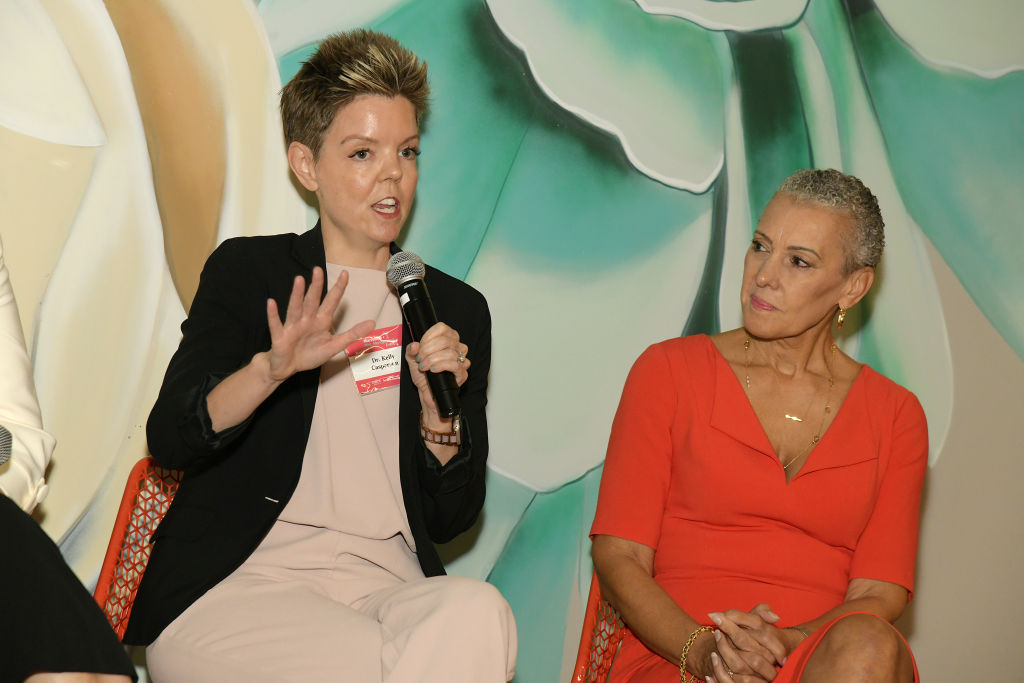After decades of fear and misinformation surrounding hormone therapy, the FDA’s decision to remove its long-standing warning on estrogen marks a historic victory for women’s health and scientific accuracy.
On Nov. 10, the U.S. Food and Drug Administration (FDA) announced it will revise its labeling requirements for menopausal hormone therapy. This is a long overdue and major advance for women’s health.
The announcement comes on the heels of the FDA’s first-ever public panel on the subject, convened this past summer. I was among the 12 leading physicians who convened at the agency’s headquarters in Maryland and communicated a clear conclusion: Estrogen, the hormone long cast as a public health threat, has been unfairly maligned.
By September, the FDA had opened a public docket to reconsider the future of hormone therapy. All told, it has been a wholly transparent process.
With the announcement, the agency will remove the incorrect “boxed warning” from vaginal estrogen products and issue corrected labeling for other estrogen therapies—a much needed course correction for one of modern medicine’s most damaging missteps.
For decades, menopausal hormone therapy was hailed as a medical triumph. Studies showed that hormones eased hot flashes, depression and sleep issues; helped libido and reduced fractures; and when started within a decade of menopause, cut the risk of cardiovascular disease, heart attack and deaths significantly. Women not only felt better, but they also lived longer.
Yet this same evidence got buried under a cloud of fear in 2002 when researchers from the government-funded Women’s Health Initiative (WHI) announced preliminary findings suggesting hormone therapy might increase breast cancer risk. The data weren’t statistically significant, but the headlines were damning: Hormones cause cancer. The nuance was lost. The genie was out of the bottle.
Prescriptions plummeted. Research funding dried up. In 2003, the FDA added a “boxed warning”—the agency’s strongest caution to all estrogen products—regardless of dose or delivery method, citing risks of heart attack, stroke, clots, breast cancer and “probable dementia.” Overnight, an entire field of medicine froze.
Physicians stopped prescribing. Medical schools stopped teaching. Women were left to cope with anti-anxiety medication, antidepressants, statins and sleeping pills. These “solutions” treated symptoms, not causes, and carried their own risks.
The stigma stuck. And hormone therapy use continued to decline. The toll, human and economic, has been staggering. A 2023 AARP and Mayo clinic study estimated that untreated menopause symptoms cost the U.S. economy $1.8 billion annually in lost productivity, plus $24 billion in related healthcare costs. A 2022 U.K. study by the Family Law Menopause Project found that 73 percent of women blamed menopause for divorce or severe marital strain. Behind those numbers are disrupted careers, broken families and years of preventable suffering.
Now, at last, the tide is turning. And the announcement marks one of the most significant reversals in women’s health policy in half a century. But regulatory correction is only half the battle.

The greater challenge lies ahead: retraining an entire generation of physicians taught that estrogen is dangerous and that testosterone doesn’t exist in women. Menopause medicine has been largely absent from medical curricula for two decades. Even well-meaning doctors are left playing catch-up, trying to fit complex hormonal conversations into 10-minute visits.
Meanwhile, women have turned elsewhere—to social media, podcasts, books and even AI tools like ChatGPT. The fact that so many trust algorithms over their own clinicians speaks volumes about both the information vacuum and the desperation of midlife women seeking relief.
The question is no longer whether science supports hormone therapy, but how quickly we can rebuild trust and partnership. Who will lead the re-education of America’s well-meaning doctors? And after two decades of fear, how do we communicate accurate, nuanced risks and benefits to the public?
The stakes are high.
A 2013 study by Dr. Philip Sarrel and colleagues, “The Mortality Toll of Estrogen Avoidance,” estimated that between 18,601 and 91,610 women aged 50–59 died prematurely between 2002 and 2011 because they avoided estrogen therapy. Even at the low end, that’s tens of thousands of preventable deaths—collateral damage from a single press conference.
History doesn’t have to repeat itself. This time, women and their families deserve better. Armed with facts and now supported by correct government labeling, women are stepping forward, educated and ready to advocate. Change is happening, from the top down and the bottom up.
Two decades after fear silenced the science, women, their loved ones and physicians together are writing a better ending to the story of menopause.
Great Job Kelly Casperson & the Team @ Ms. Magazine Source link for sharing this story.



